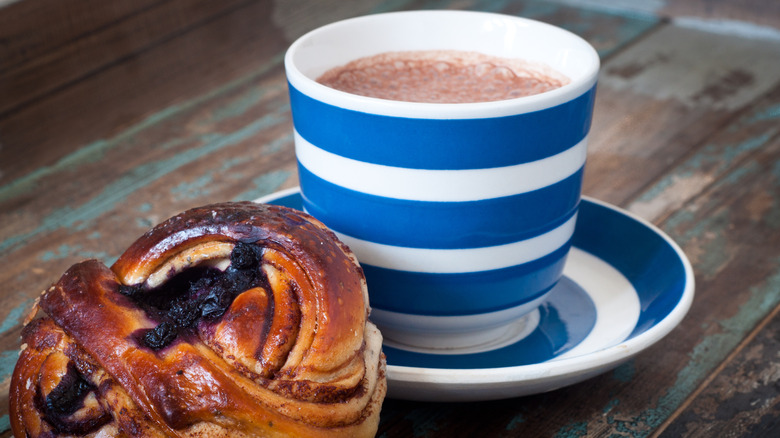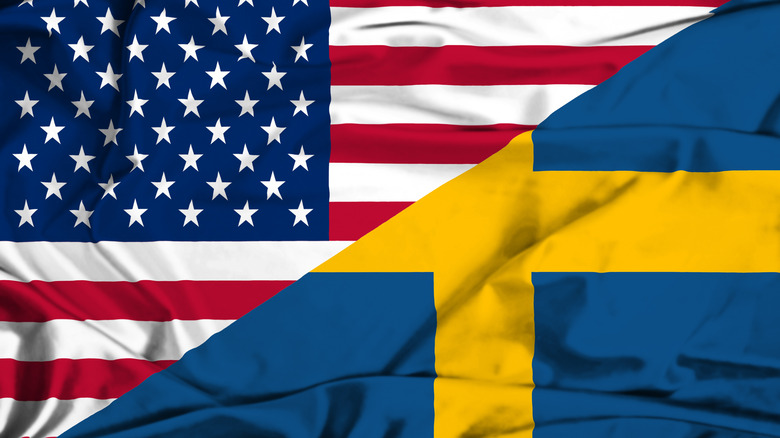The Symbolic Importance Of Coffee To Swedish-American Immigrants
The Swedes love their coffee. That's not a generalization; it's a fact. According to World Population Review, Sweden consumes an average of 18 pounds of coffee per person per year. They share this affinity for the caffeinated beverage with their Scandinavian neighbors, all of whom make up the top six countries that consume the most coffee in the world as of 2016. Sweden began importing coffee in 1685 and originally stockpiled the stuff in excess for use as medicine. It wasn't until King Charles XII and his intense love of coffee, which he'd developed when sampling Turkish coffee, that coffee really started to get popular in Sweden (via Scandinavian Standard).
However, it wasn't all sunshine and rainbows. Coffee was banned in Sweden five times before it finally won the country over completely. The Swedes love their coffee so much that they've developed a ritual known as fika, which is the exact opposite of how we here in the United States think of coffee. Instead of a quick wake-me-up over the morning news scan, fika is about taking a break and communing with friends or family over a cup of coffee. This usually happens twice a day, at 10 in the morning and again at three in the afternoon, according to Coffee Affection. The Swedish immigrants during the 19th and 20th centuries brought this love of coffee with them to the United States, where it was just as important to Swedish American culture as it was back in the motherland.
A symbol of hospitality, family, and upward mobility
As Swedish-American immigrants were popularizing the drink in the United States, coffee was also spreading in popularity across social classes. According to JSTOR Daily, by 1850, coffee was popular not just with Sweden's upper and middle classes, but with the rural poor as well. The website explains that although coffee was an expensive import, rural Swedes supplemented what little coffee they could afford with local substitutes like chicory. Upon migration to the United States, poor Swedish immigrants faced the same problem and continued to use additives to stretch their coffee supply. Coffee was an expensive habit to keep — and may soon be a luxury again. However, as more and more immigrants populated the rural towns of the United States, coffee became more readily available. To boot, as the Swedish immigrants began to experience upward mobility in terms of improved financial and social status, coffee was not only available but affordable.
According to the Minnesota Historical Society, as time went on coffee became a symbol of Swedish hospitality. Coffee's affordability meant that people could gather for kaffe med dopp — "coffee and dunk" — where they would share coffee and sweets together, something that only the upper classes could afford back in Sweden. Coffee became so ingrained in Swedish American culture that, in 1946, the town of Wilmar, Minnesota hosted its first Kaffe Fest. The festival would go on for four decades and include coffee-drinking contests, a Kaffe Fest Queen, donuts, and parades. On a more personal level, per JSTOR Daily, many of the grandchildren of those early Swedish Americans fondly remember sharing cups of heavily milked coffee with their grandparents when they were young, firmly cementing coffee into the cultural heritage of generations of Swedish Americans.

